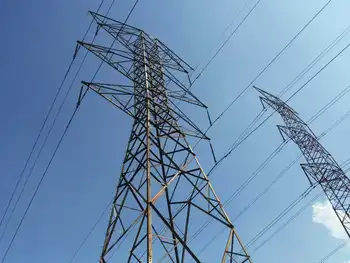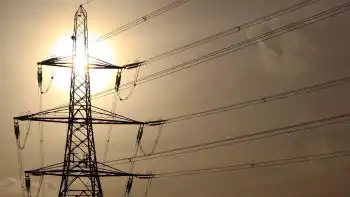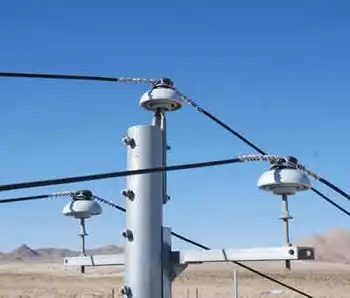The plan to extend Darlington, Pickering plants
ONTARIO - Pickering's nuclear power plant would get a "tune-up" and close in a decade, while the 20-year-old Darlington nuclear operation is slated for a refurbishment that would extend its lifespan to around 2050 under a proposal now being finalized, the Star has learned.
The long-awaited plan has been in the works at Crown-owned Ontario Power Generation since 2006 and must go to OPG's board of directors for approval before it lands on the desk of Energy Minister Brad Duguid for a decision, two government sources said.
After years of expensive retrofitting at Pickering to fix systems that raised safety concerns, anti-nuclear activists likely will be pleased at the prospect of the plant's closing but question why it won't happen sooner. But with about 12,000 high-paying jobs in Ontario dependent on the nuclear industry, the plan will be greeted favourably by the business community.
Pickering must be kept operational for a decade and the Darlington facility fully refurbished to ensure Ontario has enough electricity regardless of whether the province decides to go ahead with another nuclear plant on the Darlington site, the sources said.
Ontario Power Generation declined to comment on specifics of the plan, on which the government had promised to make a decision by the end of last year.
"It's no secret we've been working on plans for Pickering B and Darlington," said spokesman Ted Gruetzner. "The only thing remaining was an announcement on the business case. When that happens we'll tell our staff first and then let the public know."
He said a decision is expected "soon."
Darlington, just east of Oshawa, supplies about 20 per cent of Ontario's power, with Pickering at roughly 15 per cent. Pickering is divided into the older "A" plant, where two of four reactors are still operating after recent upgrades and two others are shut down, and four reactors at the newer "B" plant, which is nearing the end of its operating life and needs modernization to keep going.
An environmental assessment for the refurbishment at Darlington would be required, along with a safety review by the Canadian Nuclear Safety Commission to define how extensive the work would be and better pin down costs, the sources said.
For Pickering B, an environmental assessment has already been done and the commission is completing its end of the safety review.
More than 2,000 people work at the plant in the fast-growing suburban area. Parts of the plant are within a kilometre of homes and schools.
No dollar figures were available but nuclear refurbishments can cost into the hundreds of millions or billions of dollars. It would take at least five years to remove radioactive fuel and heavy water coolant from the Pickering plant, keeping hundreds of workers employed putting it into a safe storage mode, prior to decommissioning 30 to 40 years later after radioactivity subsides.
Refurbishment of the Darlington plant is expected to create 3,000 jobs. The sources said it's not cost-effective to do a full refurbishment at the Pickering plant because of its smaller reactors and older, first-generation CANDU design.
The four reactors in the Pickering A plant were designed in the 1960s and came on stream in the early 1970s, with the four in Pickering B dating to the early 1980s.
Darlington didn't come on line until the early 1990s and has a design that makes upgrading easier.
It has also been the most reliable plant at OPG, producing power 94.5 per cent of the time in its best year, 2008.
At Pickering, it would cost as much or more to refurbish reactors that are about 60 per cent of the size of the four Darlington reactors because workers must wear cumbersome radiation-protection suits and breathing apparatus to do all the work.
At Darlington, that is not necessary unless workers are right inside a reactor.
The CANDU plants, designed by Atomic Energy of Canada Ltd., are designed to be refurbished at their mid-life point, around 30 years of age.
Critics and anti-nuclear activists have long been after the original owner, Ontario Hydro, and its successor company Ontario Power Generation, to close Pickering because of a spate of troubles with the reactors there, prompting a number of costly repairs and lengthy shutdowns that have been thorns in the sides of governments over the years.
While boosting renewable energy sources through new wind and solar power deals and the Green Energy Act, Premier Dalton McGuinty has said Ontario remains on track to keeping half of its electricity generated by nuclear power plants as it prepares to shut heavily polluting coal-fired plants in the next couple of years.
"There are downsides associated with nuclear waste, but we have to make difficult choices," the premier said last April.
"We intend to maintain the base that we have of nuclear generation in the province of Ontario... so we can continued to power hospitals and our schools and our economy."
Nuclear power is necessary as part of Ontario's base load electricity supply, McGuinty has noted, because "the wind doesn't always blow and the sun doesn't always shine."
Last year, the government abruptly postponed a decision on building another nuclear plant at Darlington because the best of three bids, from Atomic Energy of Canada Ltd., came in at what then-energy minister George Smitherman termed "many billions" of dollars more expensive than expected.
The recession, which curbed industrial production and reduced demand for electricity, gave the province some breathing room.
The uncertain future of AECL, parts of which the federal government has indicated an interest in selling, has also been a complicating factor in settling on a price for the new Darlington plan. Duguid's spokesperson, Amy Tang, said that officials from Queen's Park and Ottawa continue to discuss those issues.
Sources said a move to keep Pickering in operation another 10 years would make sure there is enough nuclear-generated electricity until a new Darlington plant – if it goes ahead – comes on stream in eight or 10 years, which is how long it takes to get the approvals, design, build and test such a plant.
Related News

Balancing Act: Germany's Power Sector Navigates Energy Transition
BERLIN - Germany's electricity generation in January presented a fascinating snapshot of its energy transition journey. As the country strives to move away from fossil fuels, it grapples with the realities of replacing nuclear power and meeting fluctuating energy demands.
Gas Takes the Lead:
Gas-fired power plants saw their highest output in two years, generating 8.74 terawatt hours (TWh). This 13% increase compared to January 2023 compensated for the closure of nuclear reactors and colder weather driving up heating needs. This reliance on gas, however, pushed its share in the electricity mix to 18.6%, highlighting Germany's continued dependence on fossil fuels.
Coal Fades,…




